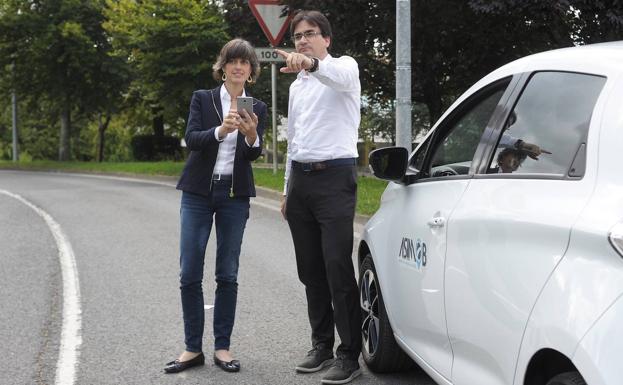ASIMOB, una solución para reducir los accidentes en carreteras en obras
Una solución inteligente basada en tecnología punta para prevenir y evitar accidentes de circulación en vías en obras.
Estibaliz Barañano, CEO de ASIMOB presentará la solución en Insurance World Challenges el 23 de septiembre en Bilbao.
 Por Estibaliz Barañano, CEO y Co fundadora de ASIMOB
Por Estibaliz Barañano, CEO y Co fundadora de ASIMOB
Technologies for road safety
There are three main factors that affect road safety: drivers’ behaviour, vehicle safety and infrastructure safety.
Drivers’ behaviour is obviously a very important factor. Multiple educational campaigns and enforcement measures are being continuously implemented, and the issue is finally leading to all the efforts and cutting-edge technology developments towards autonomous driving.
The next factor is the safety of the vehicle itself, at least to protect the driver and passengers. In this field there has been a plethora of technological developments starting probably with the safety belt, and being further developed with advancements such as airbags, ASB, ESP and a lot of research in crash energy absorption, as some examples.
The third factor is often forgotten in terms of research and applied technology: the road infrastructure. Safety in road infrastructure begins at the design phase. In fact, there are guidelines and best practices to build safe roads, and technology, such as BIM or new materials, to support safe design and construction of roads.
Safety during the lifecycle of road infrastructure: the importance of maintenance
But what happens once the road is designed and built? A decades-long period of road use. And throughout the complete lifecycle of the road, key safety aspects need constant maintenance: traffic signs, road surface and markings, safety barriers (guardrails, new jerseys…). According to research in Europe, the infrastructure is negatively affecting the outcome of 30%[1] of traffic accidents. And keeping road infrastructure in good condition would save up to 2.300 lives and avoid 20.700 injuries by 2030[2].
Main roads must undergo testing of the road building material and retro-reflectivity of traffic signs and road markings every several years. This inspection is performed with special vehicles, equipped with the scientific testing equipment, and often causing some traffic disruption.
But the day-to-day inspection, the one done by operators driving regularly to check for incidents, is still being done as it was decades ago. Despite all the technologic advancements in all the other safety factors, regular maintenance has not yet been significantly benefited from the them in the last years.
Keeping traffic signage clear, visible and correctly located is important in all roads. But it can be especially critical when there are temporary changes, such as road works. Only in the U.S during 2018, there were 671 fatal crashes with 754 fatalities due to accidents in work zones[3]. Road works are usually delimited with temporary signage, prone to being blown away by the wind, or knocked down by distracted drivers. If not properly announced, the safety of vehicles and workers is seriously endangered.
Applying AI for safety in road maintenance inspections
Current technology is ready to help these road inspection tasks. Developments in Artificial Intelligence, sensors and IoT can help automate some of the most repetitive tasks of road inspection. As an added advantage, this technology can be applied both in the main roads, and most important, in secondary and rural roads, where 55% of the accidents happen[4].
Artificial Vision to make sure traffic signs are visible to drivers and ADAS systems is nowadays feasible at a reasonable cost. Operators patrolling hundred of kilometres per day would not need to pay attention to check if a particular traffic sign has gone missing, or its view has been occluded by a parked van or a blooming tree. This can be automatically detected and reported, while operators can focus on other risks which are more complex or context-related.
Thus, current artificial vision technology can be a helpful tool for road maintenance or operation managers to ensure their network is kept safely signposted. It is applicable to both fixed and temporary sign recognition, and can be included as a part of a regular automated image analysis to detect any changes.
Moreover, this same technology can be applied to verify the visibility of road markings, which are essential to keep drivers in their lane during the night or when there is heavy rain or fog.
It is time to leverage the advantages of technology to every field. And road maintenance should not be left behind. This affects us all worldwide and has the potential to avoid hundreds of premature deaths and serious injuries.
[1] Danish Road Traffic Accident Investigation Board (2014), «Why do road traffic accidents happen?»
[2] COMMISSION STAFF WORKING DOCUMENT EU Road Safety Policy Framework 2021-2030 – Next steps towards «Vision Zero»
[3] https://www.workzonesafety.org/crash-information/work-zone-fatal-crashes-fatalities/#national
[4] ROAD SAFETY IN THE EUROPEAN UNION Trends, statistics and main challenges (April 2018)






